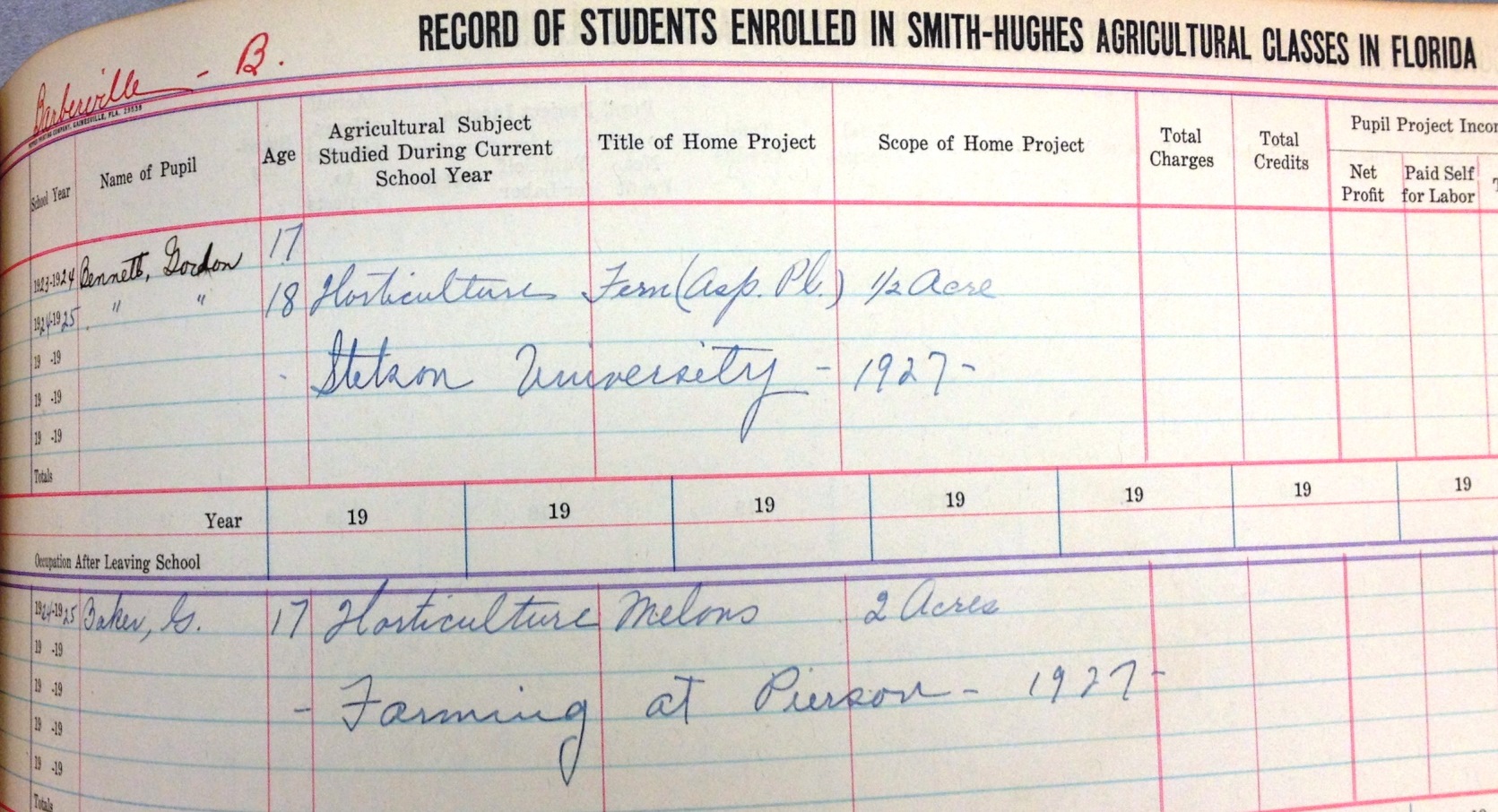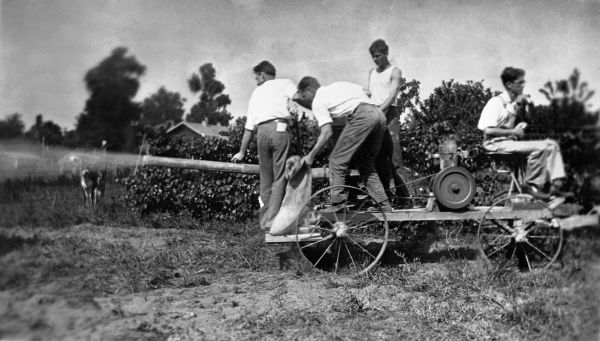Description of previous item
Description of next item
Family History on the Farm
Published May 5, 2015 by Florida Memory
Sometimes the best genealogical information comes from truly unexpected sources. The State Archives of Florida holds records from a wide variety of state agencies, many of which have had direct contact with the state’s citizens over the years. As a result, many of the records document the specific locations of specific individuals at specific times, which can be a big help for folks tracing their family trees.
One unusual source of information comes from the records of the Smith-Hughes agricultural education program (Record Series 299), which was active in Florida from about 1918 to 1927. The program was funded by the federal government and administered by the Florida Department of Public Instruction, a predecessor of today’s Department of Education. Participating students took instruction in the areas of agriculture and home economics and completed projects, such as farming a small crop or raising livestock. The program was immensely popular in rural communities nationwide, and over time it was incorporated into what we now know as the Future Farmers of America.

An example page from a volume of student records for the Smith-Hughes agricultural education program (Series 299, State Archives of Florida).
The records in Series 299 document the students who participated in the Smith-Hughes classes. Each student’s entry gives the student’s name, age, his or her project and its extent, income and expenditures associated with the project, and the school and teacher providing the class. Perhaps most crucially, many of the entries explain what the students were doing in 1927 when the program ended. Some of the students appear to have stuck to farming, while others went on to high school, college, or straight into a new career. This information can be highly valuable for family history researchers working with a “mystery” ancestor for whom information has been tough to find.

Example entries from Barberville, Florida from the Smith-Hughes agricultural education records. As of 1927, student Gordon Bennett had moved on to Stetson University, while G. Baker had established himself as a farmer at Pierson, Florida (Series 299, State Archives of Florida).
While these records are interesting, they do have limitations. Not every student in a community took the Smith-Hughes classes, nor did every rural Florida community offer them. According to the 1916-1918 report of the State Superintendent of Public Instruction, only 24 Florida counties applied for the program, and of these counties fewer still received funding. Participating communities included: Alachua, Allentown, Altha, Aucilla, Baker, Barberville, Canal Point, Chiefland, Chipley, Crescent City, Delray, Eustis, Fort Pierce, Fort White, Graceville, Grand Ridge, Greensboro, Gonzalez, Hawthorne, Homestead, King’s Welcome, Laurel Hill, Lemon City, Live Oak, Madison, Malone, Marianna, Mason, Mt. Pleasant, Montverde, Plant City, St. Cloud, Sanford, Sebring, Sneads, Summerfield, Taft, Trenton, Wauchula, and Winter Haven.

Members of a Florida chapter of the Future Farmers of America apply pesticide to a citrus grove. The FFA grew out of the nationwide Smith-Hughes agricultural education program (circa 1920s).
These limitations aside, the records offer a unique glimpse into the lives of students living in some of Florida’s most rural communities in the 1920s. And, for some genealogists, they may be just the right piece of the puzzle to help illuminate the life of an ancestor.
The Smith-Hughes Student Records (Series 299) are just one of many genealogically significant record series housed at the State Archives of Florida. Visit our guide to genealogical research on Florida Memory AND the Archives’ Online Catalog to learn more about our collections and how you can use them to discover more branches of your family tree.
Cite This Article
Chicago Manual of Style
(17th Edition)Florida Memory. "Family History on the Farm." Floridiana, 2015. https://www.floridamemory.com/items/show/295246.
MLA
(9th Edition)Florida Memory. "Family History on the Farm." Floridiana, 2015, https://www.floridamemory.com/items/show/295246. Accessed December 15, 2025.
APA
(7th Edition)Florida Memory. (2015, May 5). Family History on the Farm. Floridiana. Retrieved from https://www.floridamemory.com/items/show/295246

 Listen: The Blues Program
Listen: The Blues Program